Saturday Nov 29, 2025
Saturday Nov 29, 2025
Thursday, 21 November 2024 00:26 - - {{hitsCtrl.values.hits}}
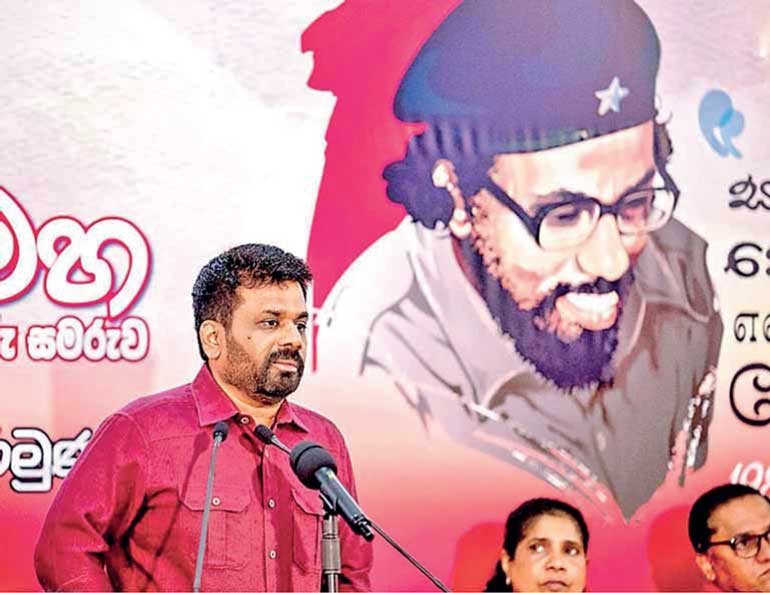
35 years after Wijeweera
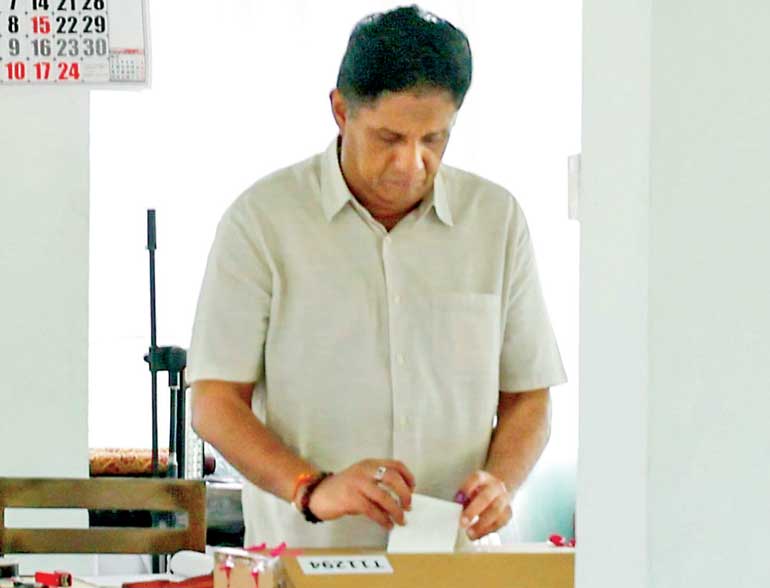
Sajith under siege

New governing elite
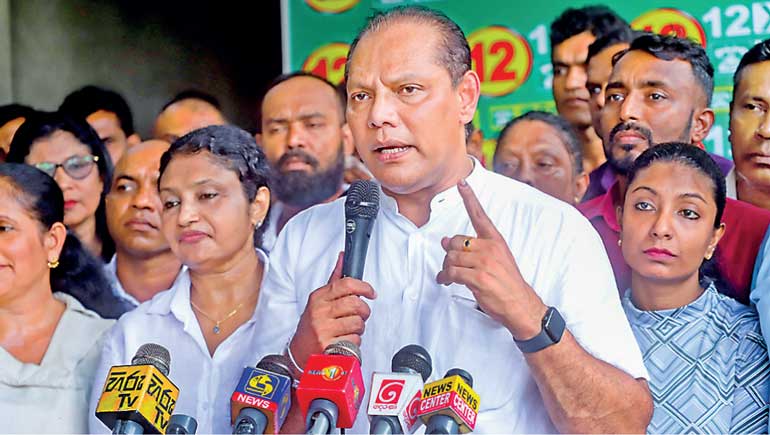
Could save SJB as Deputy
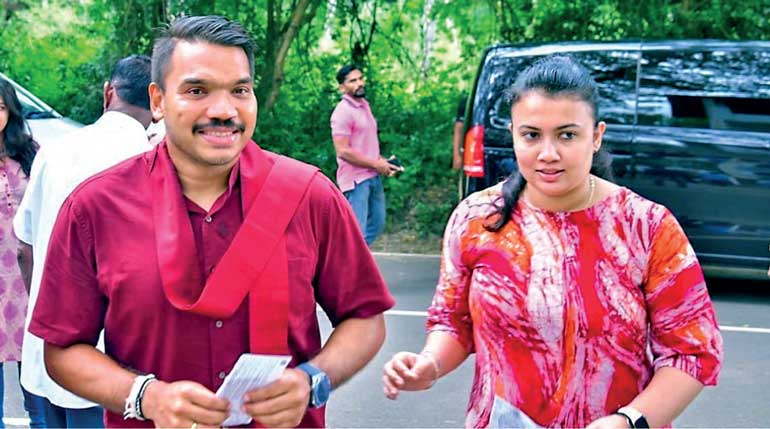
Malcolm Gladwell’s outlier?
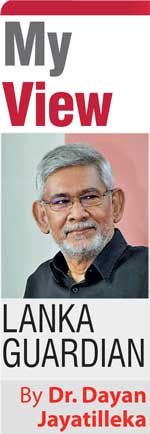 There were two classic works on Sri Lanka after 1956. “Ceylon: Dilemmas of a New Nation” (Princeton 1960) by Howard Wriggins (he acknowledges with thanks the input of Mervyn de Silva--aged 30 at the time) and “The Emerging Elite: A Study of Political Leadership in Ceylon” by Marshall Singer (MIT, 1964).
There were two classic works on Sri Lanka after 1956. “Ceylon: Dilemmas of a New Nation” (Princeton 1960) by Howard Wriggins (he acknowledges with thanks the input of Mervyn de Silva--aged 30 at the time) and “The Emerging Elite: A Study of Political Leadership in Ceylon” by Marshall Singer (MIT, 1964).
Political theory holds that the ‘circulation of elites’ is imperative for the health of the body politic and society. The composition of the President Anura Dissanayake’s new JVP-NPP Cabinet, as that of the new Parliament, signals that a new elite has emerged and acceded to power and rulership. It faces the old dilemmas.
Swinging Sri Lanka
Over a decade, Sri Lanka’s politics has displayed extreme electoral volatility manifested in swings of increasing amplitude. These began with 2015 when the voters swung against the Rajapaksa regime and elected the liberal-reformist Yahapalanaya (‘Good Governance’) government of Maithripala Sirisena as President and Ranil Wickremesinghe as PM.
The liberal swing of 2015 was replaced in 2019-2020 by an ultranationalist ‘Trumpian’ swing to Gotabaya Rajapaksa.
The AKD-NPP swing of 2024 is the third in almost 10 years, and the one of greatest amplitude so far.
Sri Lanka is no stranger to such pendulum swings. The classic swing was away from the post-Independence decade of UNP dominance to the SLFP-Left coalition of 1970 with a 2/3rds majority. It was replaced after one term by a UNP administration with a 5/6ths majority.
What’s new is the accelerating pace and breadth of the swings.
Macro-mandate, meta-project
Anura Dissanayake called for a National Renaissance. What he has is not a ‘renaissance’, which implies a revival, a return to a golden age. What’s he got is a mandate for something far more fundamental and future-oriented. It is to be a ‘Re-Founding Father’ (or elder brother), doing what DS Senanayake should and could have but didn’t, while Nehru did: build a Lankan nation.
Sunil Khilnani and Shashi Tharoor have each written about “the Idea of India” that Nehru had. They were borrowing from General Charles de Gaulle’s “a certain idea of France” which animated the Resistance.
AKD has a certain idea of Sri Lanka: rebuilding Sri Lanka from below, not above, through the idea of Sri Lankans firstly as people, then as nation. Today the sovereign people have peacefully, democratically, opened the portal for that grand project. Portals don’t stay open. He must move with the country, through it.
It is not only that as the post-election map shows, the Sri Lankan people voted for the first time the same way in Point Pedro and Dondra Head.
It is also that they rejected both extremes, Tamil ultranationalism and Sinhala ultranationalism, defeating the former and eliminating the latter.
Ultra-nationalists were rejected by the only people who could do so: the Sinhalese rejected Sinhala ultranationalists while the Tamils rejected theirs.
What Anura persuaded the Tamil voters to do produced the strongest possible blow to Diaspora extremism.
This was NOT the first time that Northern voters had picked a progressive Sinhala option over a Tamil nationalist one. In October 1982 the Tamil-majority North voted for the mainstream opposition presidential candidate Hector Kobbekaduwa—whose campaign was spearheaded by Vijaya Kumaratunga—over Kumar Ponnambalam, the son of the legendary GG. Ponnambalam and father of Gajan Ponnambalam. However, the NPP did better this time because Hector Kobbekaduwa lost in the South while winning in the North. Anura’s NPP carried both North and South.
A single party or hybrid political formation connects—spans-- the island from South to North. It was an explicit answer to Anura’s explicit call for the Tamil people’s buy-in at his election meetings in Jaffna.
AKD followed-up his strategic feat of by-passing the main Opposition and making a quantum leap from 3% and 3 seats to the Presidency, by repeating that show of strategic skill towards the tail-end of his Parliamentary campaign. Almost a postscript, he toured the North, directly addressing the Tamil and Muslim voters, just as Donald Trump met with the Arab-American voters in Michigan. Both political leaders swung their crucial audiences with these out-of-the-box moves, late in the campaign.
Anura instinctively spotted the weakening through fragmentation of the organic Tamil nationalist bloc. Reading the signs from Jaffna relayed by JVP seniors Bimal Ratnayaka and Ramalingam Chandrasekaran who had done excellent political work there, he intervened decisively.
The Tamils and Sinhalese, the North and South, voted as a people, and voting as a people, they voted perhaps unconsciously, to express their willingness to be a nation, to be Lankans while retaining their ethno-cultural identities but transcending them if justice is ensured. Voting in a transparently convergent manner for the first time, the people of an ethnically divided island built a bridge or traced an overarching arc. The people turned the election into a plebiscite and voted for the meta-project of a progressive founding/re-founding of a Sri Lankan nation.
It is a real chance but not a done deal. It is a confluence, a conjuncture, a moment. Anura Dissanayake and the JVP-NPP have been given the chance, the mandate and the task to actually build a Lankan nation. They must do so consultatively, consensually and before the moment dissipates.
President Dissanayake should avoid the mistake made by Presidents Chandrika Kumaratunga and Mahinda Rajapaksa at the height of power and popularity.
 CBK overreached, dissipating a massive mandate (63%) by quixotically pursuing quasi-federalism and persisting in Mangala Samaraweera’s anti-war Sudu Nelum Movement even when the Tigers had restarted the war.
CBK overreached, dissipating a massive mandate (63%) by quixotically pursuing quasi-federalism and persisting in Mangala Samaraweera’s anti-war Sudu Nelum Movement even when the Tigers had restarted the war.
 MR delayed, not holding a Provincial Council election in the North in late-2009 (as I had argued) which could have been won by his Tamil ally, Devananda’s EPDP.
MR delayed, not holding a Provincial Council election in the North in late-2009 (as I had argued) which could have been won by his Tamil ally, Devananda’s EPDP.
MR was blocked by Basil Rajapaksa who wanted the SLFP to win Jaffna and needed time for economic development to establish a politico-electoral footprint. Basil was followed by Gotabaya whose hawkish followers wanted to abolish devolution and demographically re-engineer the North and East, entrenching Sinhala dominance. Thus, Mahinda could not use the advantageous moment of 2009 to address and settle the Tamil Question along the lines he had promised India. Talks started only in 2011 and broke down.
Anura has the chance to resolve the main question that has contributed to the country’s prolonged post-Independence crisis and prevented sustainable economic takeoff and development. He has bridged the North-South divide politically by electoral means, just as Mahinda reunified it territorially by military means. AKD is completing MR; MR enabled AKD’s achievement. Prabhakaran and the Tigers died at Nandikadal in 2009. Tamil Eelam died where it was born, in Jaffna, in 2024.
Mahinda Rajapaksa won the war but perhaps inevitably could not win the peace. Anura and the NPP could. A mix of Equal Rights, anti-discrimination legislation, political devolution and territorial semi-autonomy, with 13A as baseline – that’s easier than starting afresh, triggering interminable disagreement over where to begin--but revising and rectifying it. That composite package involving trade-offs may dismantle the decades-long dogma of the Tamil nationalist leaders for a re-merged North-East in a federal or supra-unitary model.
New architecture
The span and sweep of the NPP’s victory justify a new political architecture of a progressive Third Republican Constitution which includes remodelling the State.
The downside is that the new administration will probably succumb to the temptation of changing the electoral system in a manner that fits the JVP-NPP’s strengths, just as JR Jayewardene thought the system of Proportional Representation fitted the UNP’s strength of being the largest single party in the island, never bargaining for Ranil Wickremesinghe’s catastrophic stewardship of the UNP. In defence of JRJ, let it be said that Proportional Representation is far superior to the first-past-the post, winner-takes-all Westminster model. The minorities get fair representation.
The NPP-JVP seems wedded to the abolition of the executive Presidency, but apart from Nepal, there is almost no leftist leader who is not a President, and Nepal’s political instability is due to the absence of an elected President. My suggestions are:
(1) An electoral system which is primarily one of PR.
(2) A bicameral legislature, with an Upper House representing the provinces.
(3) A Presidency more transparently accountable to the legislature and judiciary.
(4) One or more Vice-Presidencies which can accommodate minorities.
These suggestions are neither tailormade for the JVP-NPP nor meant to impede them. They were first made in an essay entitled “Which Way for the Left?” serialised in a mainstream English-language newspaper in March 1989, translated into Sinhala and published both in the press and in pamphlet form as “Vama Koibatada?” It triggered a debate in the newspapers with an old comrade Dayapala Tiranagama (now with the FSP-PSA) who objected among other things to my embrace of Social Democracy.
Mirroring populisms
In a fascinating symmetry between polar opposites, parties/leaders in the USA and Sri Lanka with antipodal ideologies have demonstrated strikingly similar political achievements within the same month. What is in common is the victory of an emotive Populism, albeit of antithetical variants: the Right Populism of Trump and the Republicans, and the Left Populism of Anura Dissanayake and the JVP-NPP.
Donald Trump won the popular vote by a majority (over 50%), the Electoral College, and both Houses of the Congress. In terms of the map, he broke through the Democrats ‘blue wall’ and painted most of America a Republican red, restricting the Democrats’ blue to parts of the two seaboards. Socially, he won the poor and blue-collar workers, and made gains among social/demographic sectors thought to be antipathic to him: women, Blacks and Hispanics. ‘Trump Broke the Democrats’ Thermostat’ wrote John Burn-Murdoch in the Financial Times (London).
Though at the Presidential election Anura Dissanayake did not win a majority as Trump did, and all elected Presidents in Latin America and France have to, he led the JVP-NPP to an unprecedentedly colossal victory at the General Election.
The people’s real target was the entrenched bipartisan Establishment based in Parliament. They completed the Aragalaya—it was their Aragalaya, not a ‘Colour Revolution’ -- of 2022, just as the people completed the Hartal uprising of 1953 with SWRD’s victory in 1956. Unlike the LSSP-CPSL in 1953-’56, there was a Left (JVP-NPP) that knew to pick up on, carry forward and complete the previous people’s uprising, and a moderate center (SJB) that hadn’t severed its umbilical cord with the UNP and therefore didn’t position itself to win as SWRD’s five-year-old SLFP did in ‘56.
Future prospects
The future will be framed by two factors. The first is the economic crisis and the problem of debt repayment beginning 2028, which may feature a harshly austere policy regime in 2027 as preliminary positioning.
The second is the factor of ‘overdetermination’, a term borrowed from Freud by philosopher Louis Althusser. Simply put, it means a complex conjuncture, with an overriding role or influence of a factor that is extrinsic to the national socioeconomic formation. Our friend Dr Newton Gunasinghe popularised the term in Sri Lanka referring in an essay in the Lanka Guardian magazine in May 1984 to the ‘overdetermining’ role of the ethnic conflict-- ‘overdetermining’ the domestic class struggle, that is.
Sri Lanka’s economic crisis driven by indebtedness will be facing an ‘overdetermination’ far closer to the original Althusserian usage.
Louis Althusser pointed out that the Russian Revolution of 1917 was not the consequence solely or primarily of factors internal to Russian society and economy but by an ‘overdetermined’ contradiction: the ‘overdetermination’ and condensation of those factors by the First World War.
Trump’s evolving Cabinet seems a War Cabinet. It is the roughest, toughest posse or militia he can round up; the most militant, martial and ideologically extreme in US history in my lifetime. It is being assembled for a particular project, or, given its logic, can serve only one purpose. That is, to reverse what is seen as a slippage of American global hegemony due to the rise of:
 China as a Great Power
China as a Great Power
 Iran as a regional power
Iran as a regional power
 Domestic radicalism with the campuses as vector.
Domestic radicalism with the campuses as vector.
Fuelled by Apocalyptic religious fundamentalism and imperial arrogance, the Trump administration is almost certainly going to trigger a war – consciously or inadvertently-- with grave consequences for the world economy and the world system. Already, the departing Biden administration is qualitatively escalating an existing war, authorising attacks by Ukraine using advanced US weapons-systems (with US maintenance/training crews) deep into Russia. UK will doubtless authorise use of its Storm Shadow missiles.
Global polarisation will ‘overdetermine’ Sri Lanka’s crisis just as the 1973 OPEC oil crisis impacted on the Sirimavo Bandaranaike government with its 2/3rds majority, “the greatest number of convinced Marxists in Cabinet outside of Allende’s Chile” (The Economist, London), new Republican Constitution and land reforms.
SJB: Make Dayasiri Deputy
(I) Scrunched, the SJB survives the ‘tsunami’ as the main Opposition.
(II) Sajith Premadasa remains the party’s highest vote-getter island-wide.
(III) The SJB’s 35 elected MPs are diamonds from coal having withstood electoral pressures unprecedented in Sri Lanka’s political history.
Dr. Harsha de Silva and Eran Wickremaratne wrecked the SJB’s chances from 2020 by ignorant misdirection. They:
 Confused POLICY with POLITICS, economic doctrine with political strategy.
Confused POLICY with POLITICS, economic doctrine with political strategy.
 Pushed a ‘keyword’ untranslatable into Sinhala, as the party’s main selling-point: the ridiculous-sounding “BLUEPRINT EKA”.
Pushed a ‘keyword’ untranslatable into Sinhala, as the party’s main selling-point: the ridiculous-sounding “BLUEPRINT EKA”.
 Were ignorant of the history of the pre-Ranil UNP, and blocked the branding of the SJB as “a new progressive party retaining the positive aspect of the UNP tradition” as urged by Imthiaz Bakeer Markar, veteran of the UNP’s post-1970 transformation and grand 1977 comeback.
Were ignorant of the history of the pre-Ranil UNP, and blocked the branding of the SJB as “a new progressive party retaining the positive aspect of the UNP tradition” as urged by Imthiaz Bakeer Markar, veteran of the UNP’s post-1970 transformation and grand 1977 comeback.
 Ignored Sajith’s ‘progressive-centrist, Social Democratic middle path’ and foisted a para-Ranilist ‘Rightist/Center-Right’ identity on the party while the public was pivoting left/center-left, as evidenced by the JVP-NPP landslide.
Ignored Sajith’s ‘progressive-centrist, Social Democratic middle path’ and foisted a para-Ranilist ‘Rightist/Center-Right’ identity on the party while the public was pivoting left/center-left, as evidenced by the JVP-NPP landslide.
 Rejected President Premadasa’s populist-developmentalism as alternative model and emphasised SJB-UNP policy continuity post-Aragalaya 2022, keeping the SJB entangled in the UNP’s decades-long death-dive under Ranil when the public mood was manifestly anti-incumbent/anti-Establishment.
Rejected President Premadasa’s populist-developmentalism as alternative model and emphasised SJB-UNP policy continuity post-Aragalaya 2022, keeping the SJB entangled in the UNP’s decades-long death-dive under Ranil when the public mood was manifestly anti-incumbent/anti-Establishment.
Eran was electorally ejected. Only the irrational can urge that Harsha, who got 60,000 votes LESS than Sajith, should be the SJB and/or Opposition leader, replacing Sajith who got 60,000 MORE than him in Colombo (and nationwide).
The SJB needs change at the leadership level, but that change is not ditching Sajith Premadasa who always polls much higher at a presidential election than his party does at a General Election and not merely because of the subtraction of ethnic parties at the latter. He is more popular than his party because of his rural resonance which Harsha-Eran will never have.
The change the SJB needs is the recreation of the original partnership which led the reform struggle against Ranil in the UNP in 2010-2011 when Harsha and Eran were solidly backing Ranil. That’s Sajith Premadasa plus Dayasiri Jayasekara. Dayasiri should be the SJB’s Deputy Leader.
The SJB has 40 MPs in a parliament of 225. With 17 parliamentarians in a 151-member Parliament, the revamped, reoriented JR-Premadasa UNP Opposition of 1970 flipped a 2/3rds majority and won a 5/6ths majority in 1977.
The principle is “The Bigger They Are the Harder They Fall”.
Meanwhile, as Malcolm Gladwell insisted, watch the Outlier: in extremely adverse conditions, the sole growth by any Opposition party was by Namal Rajapaksa’s SLPP.